



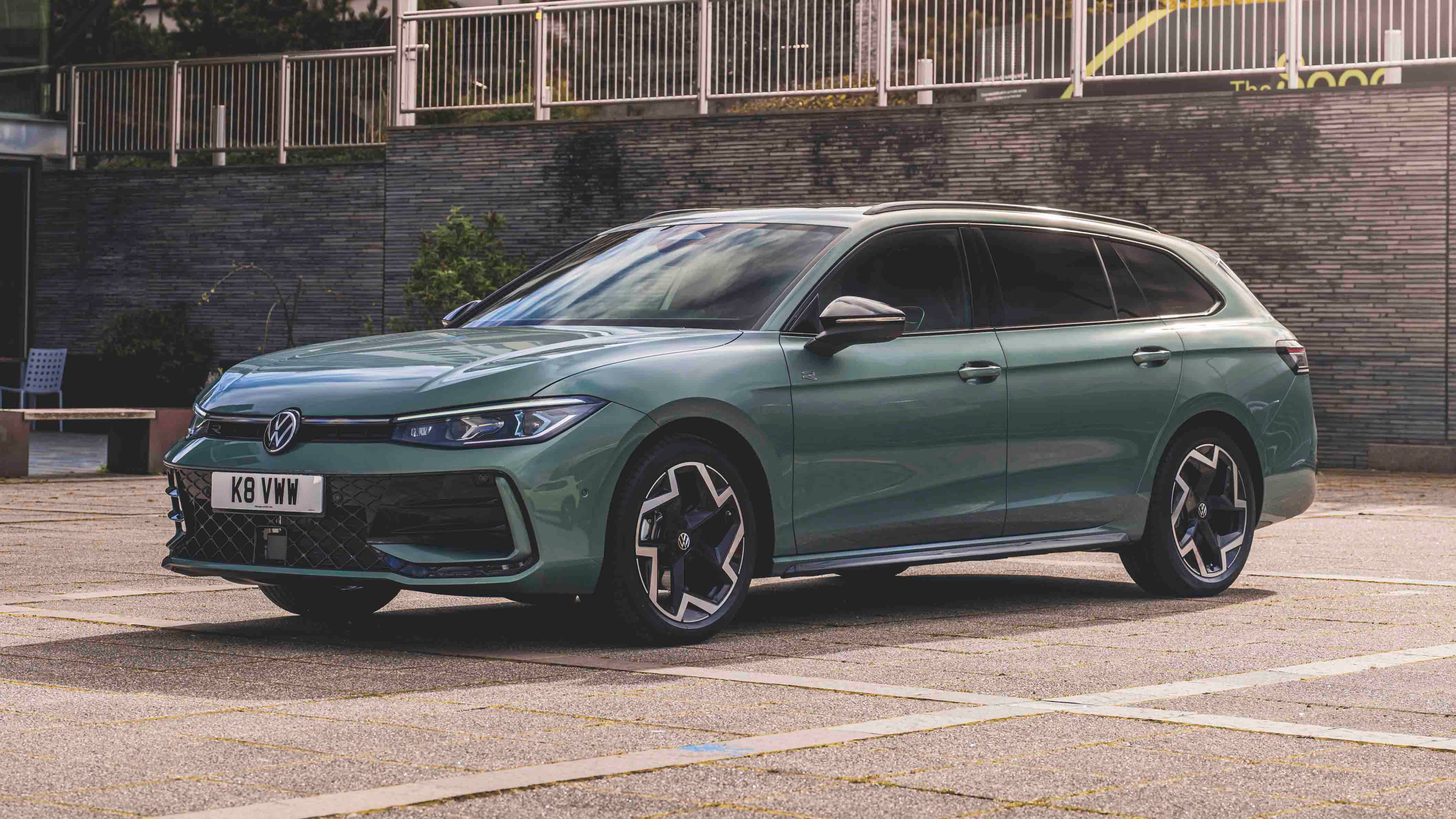
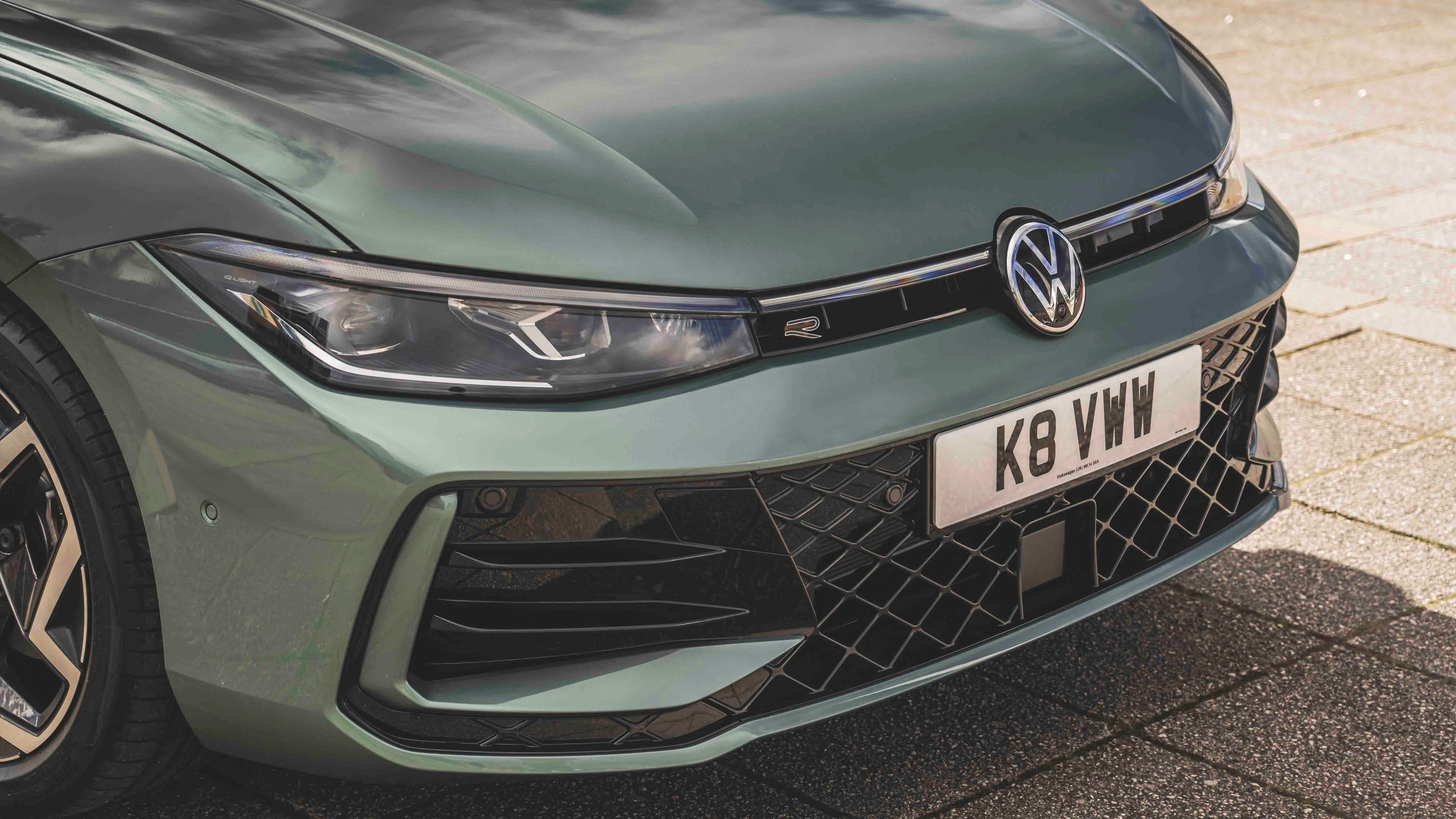
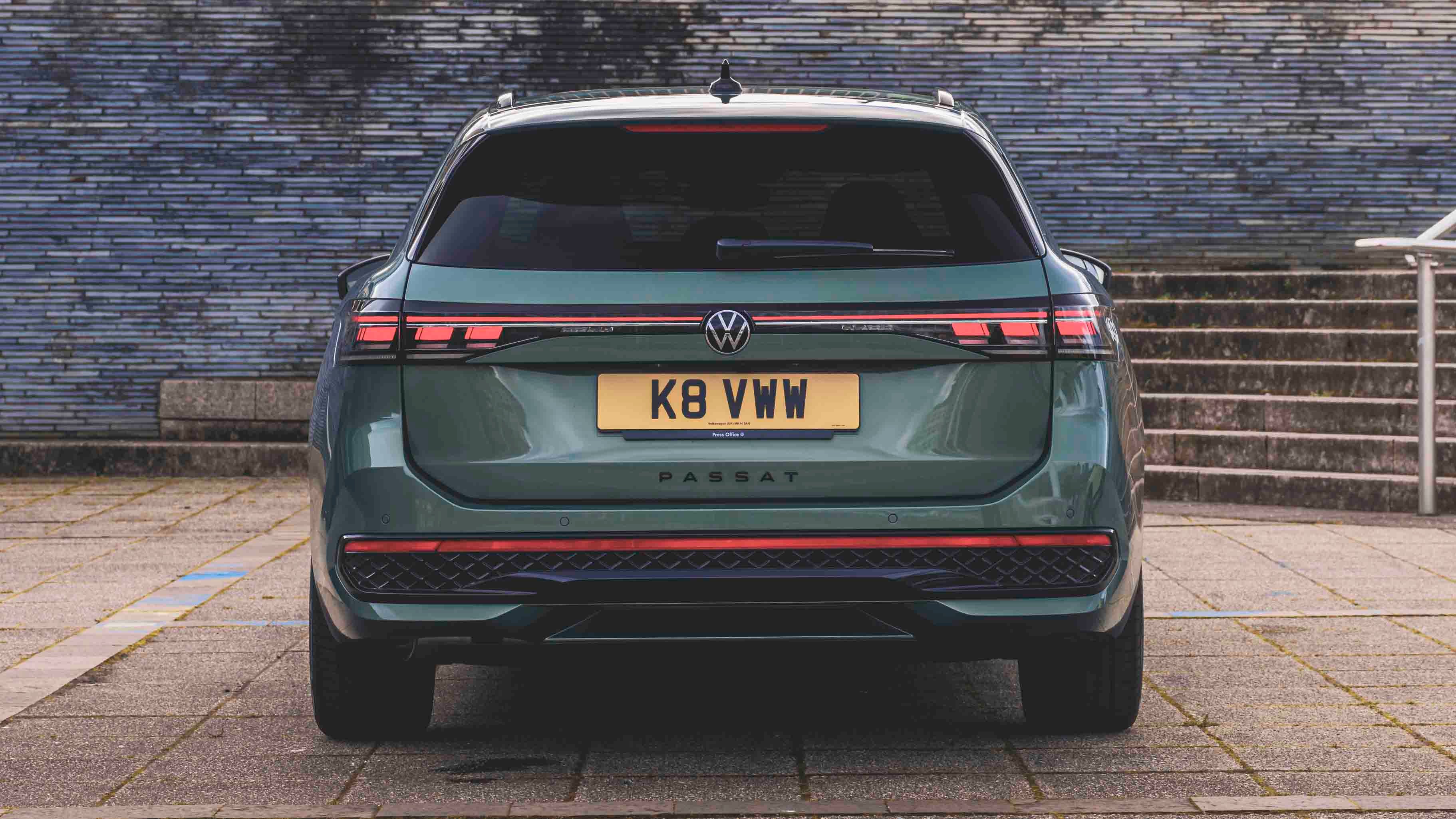
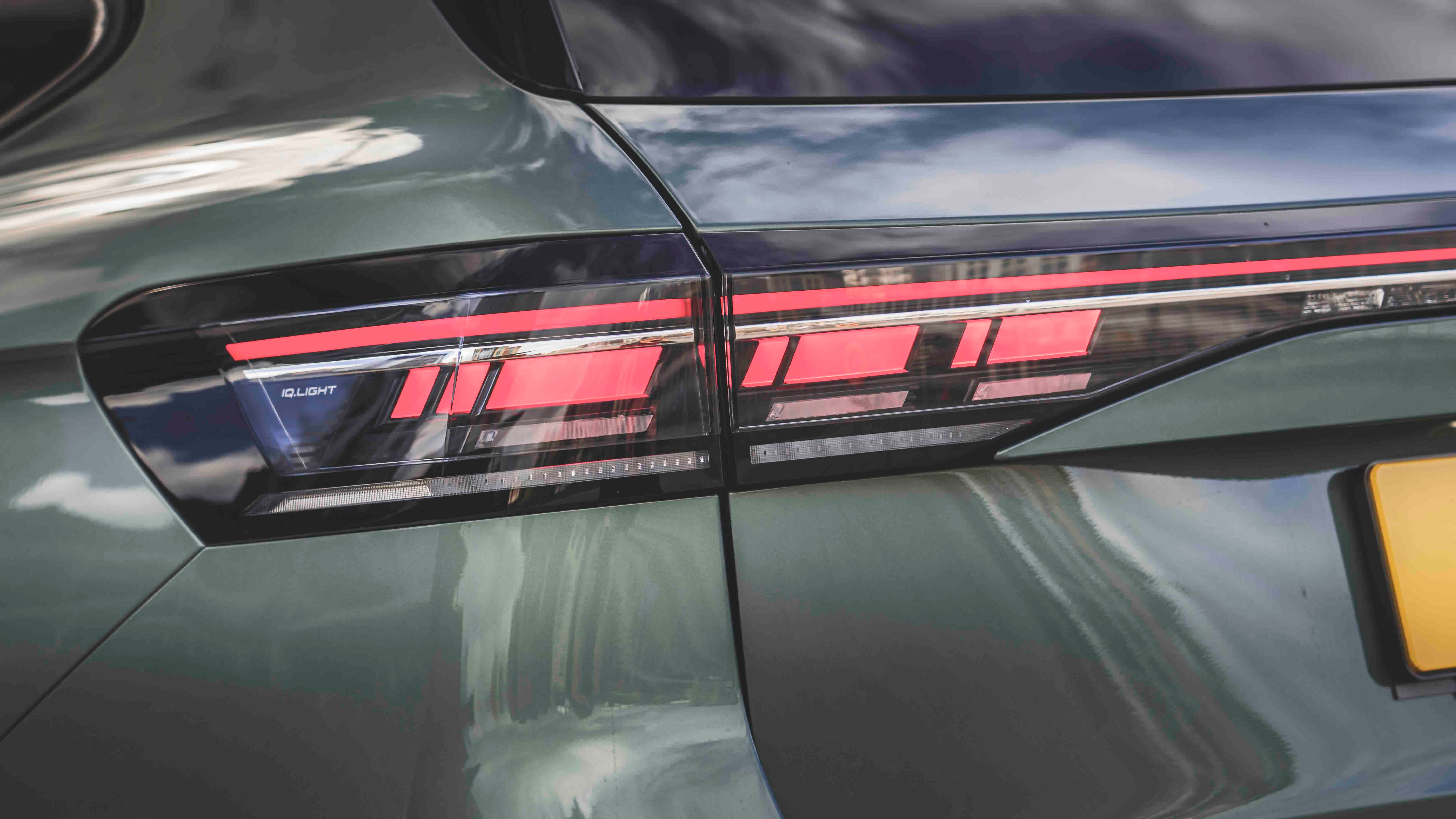

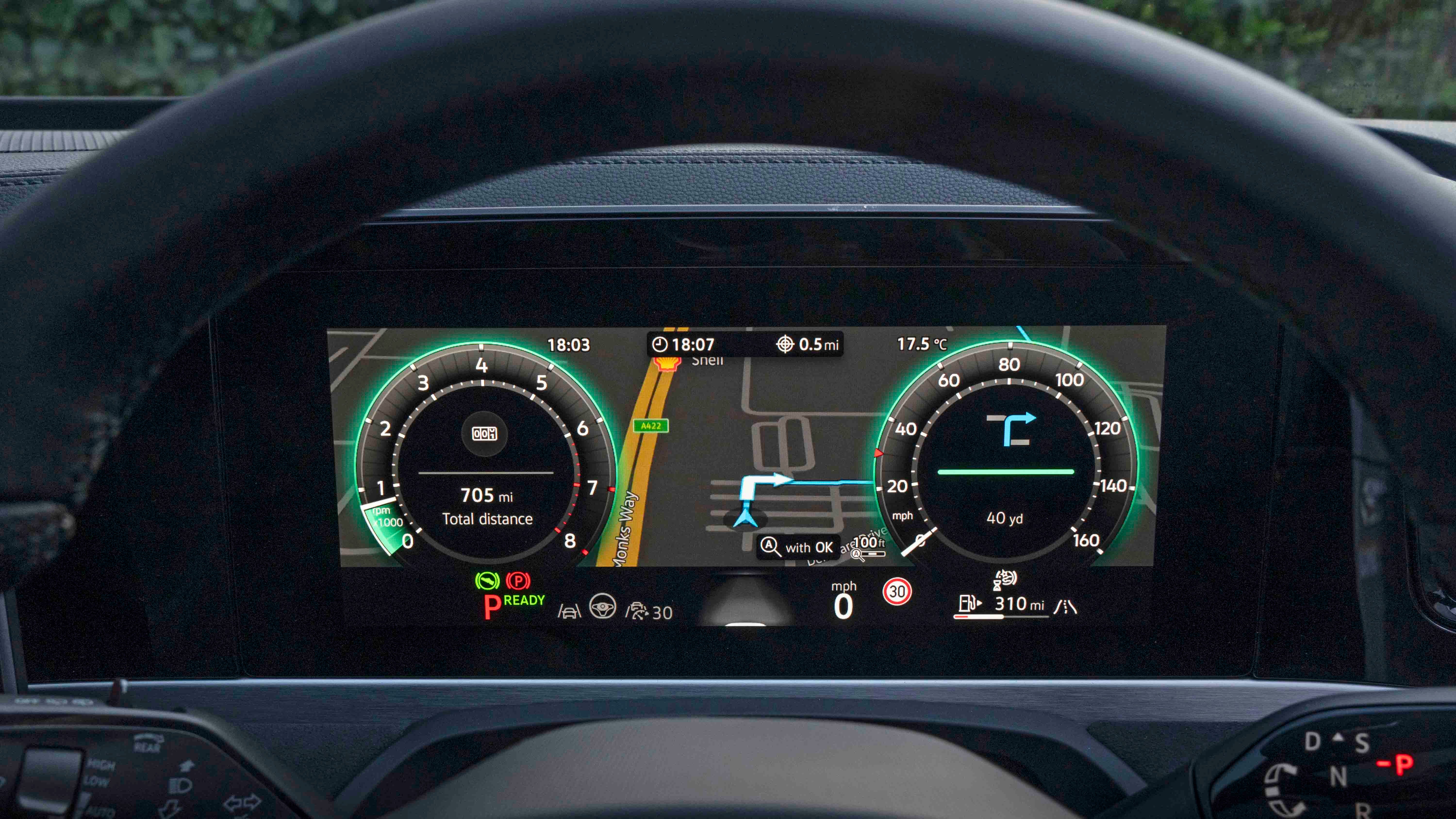

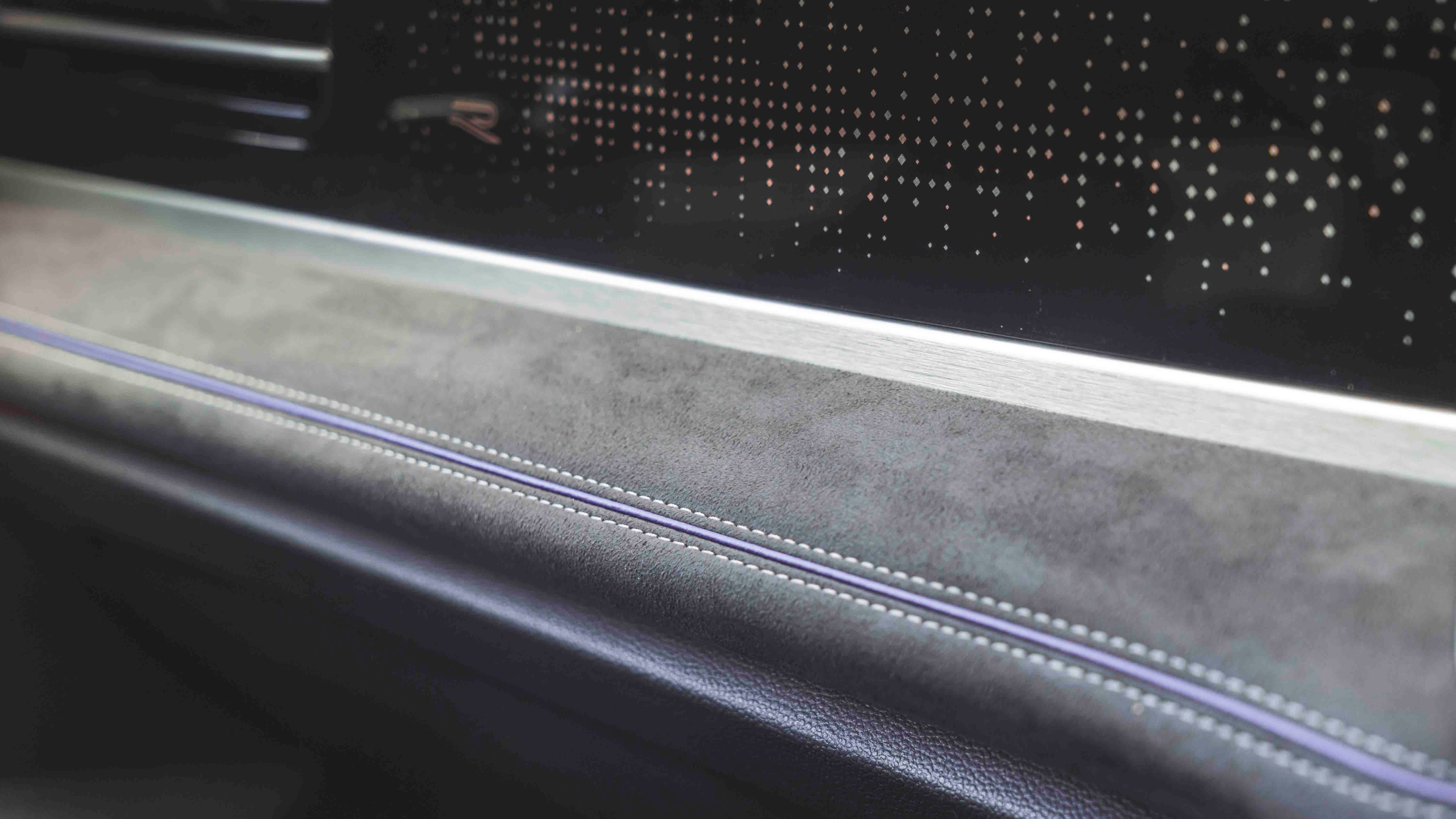
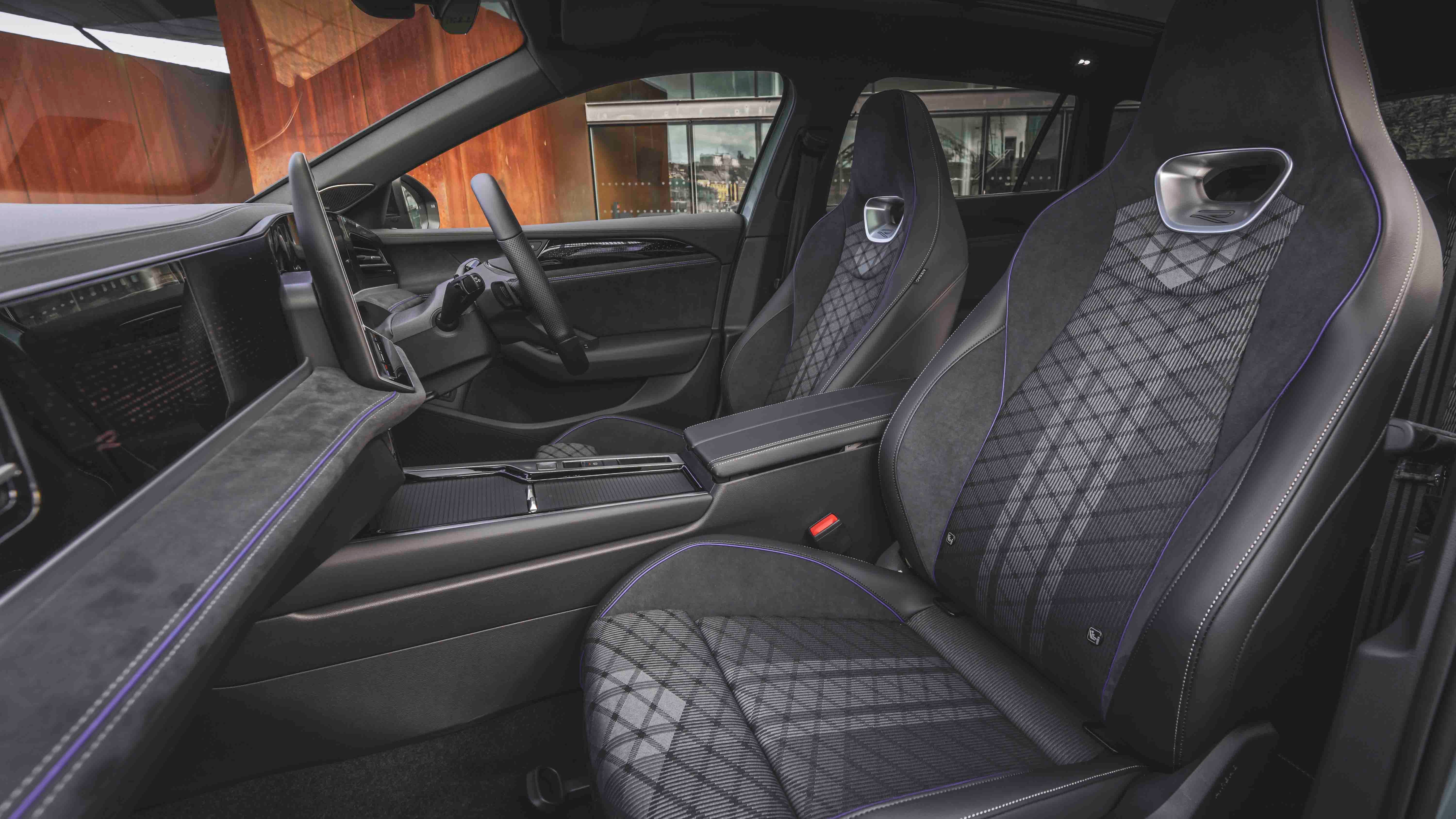
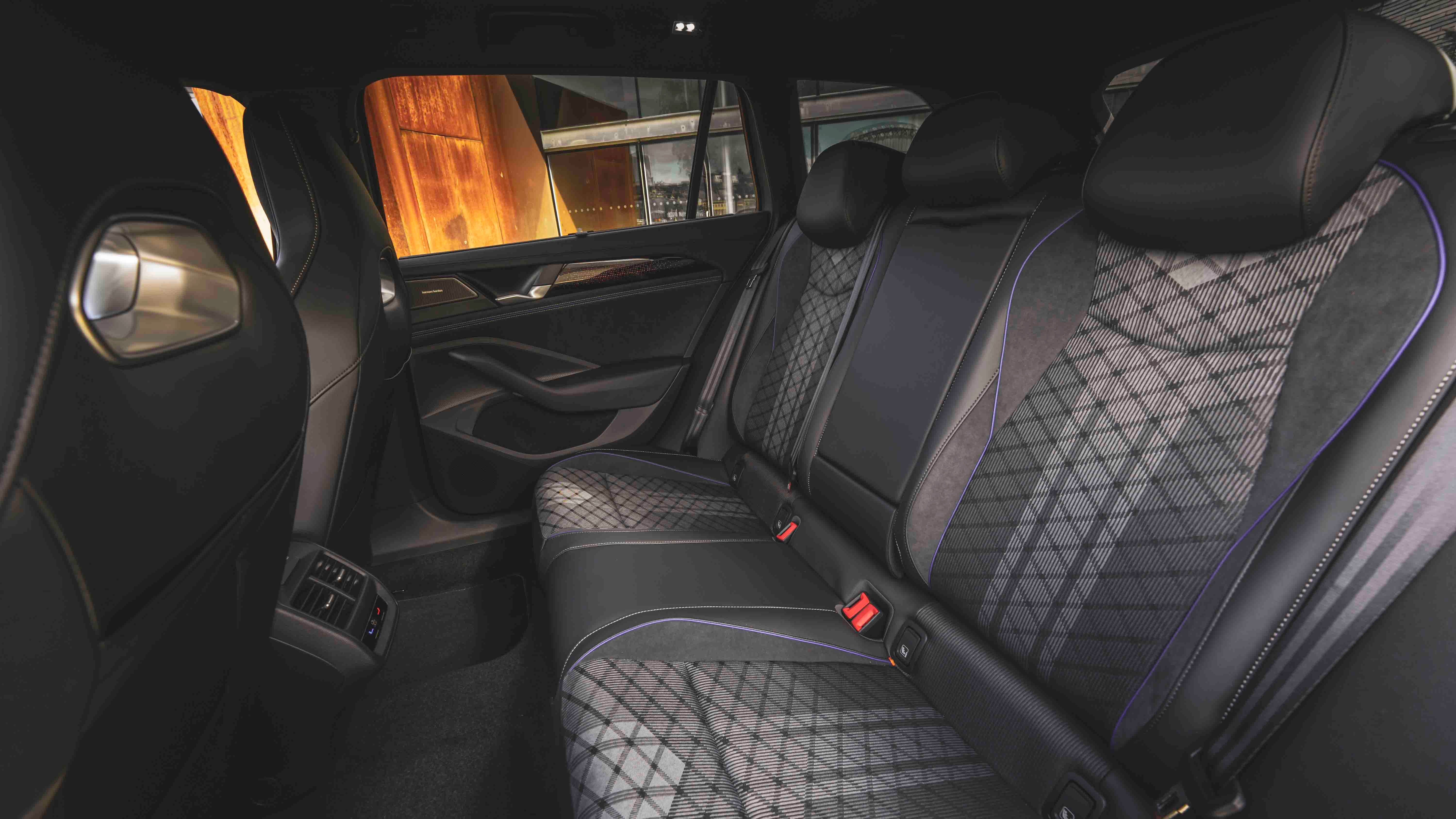
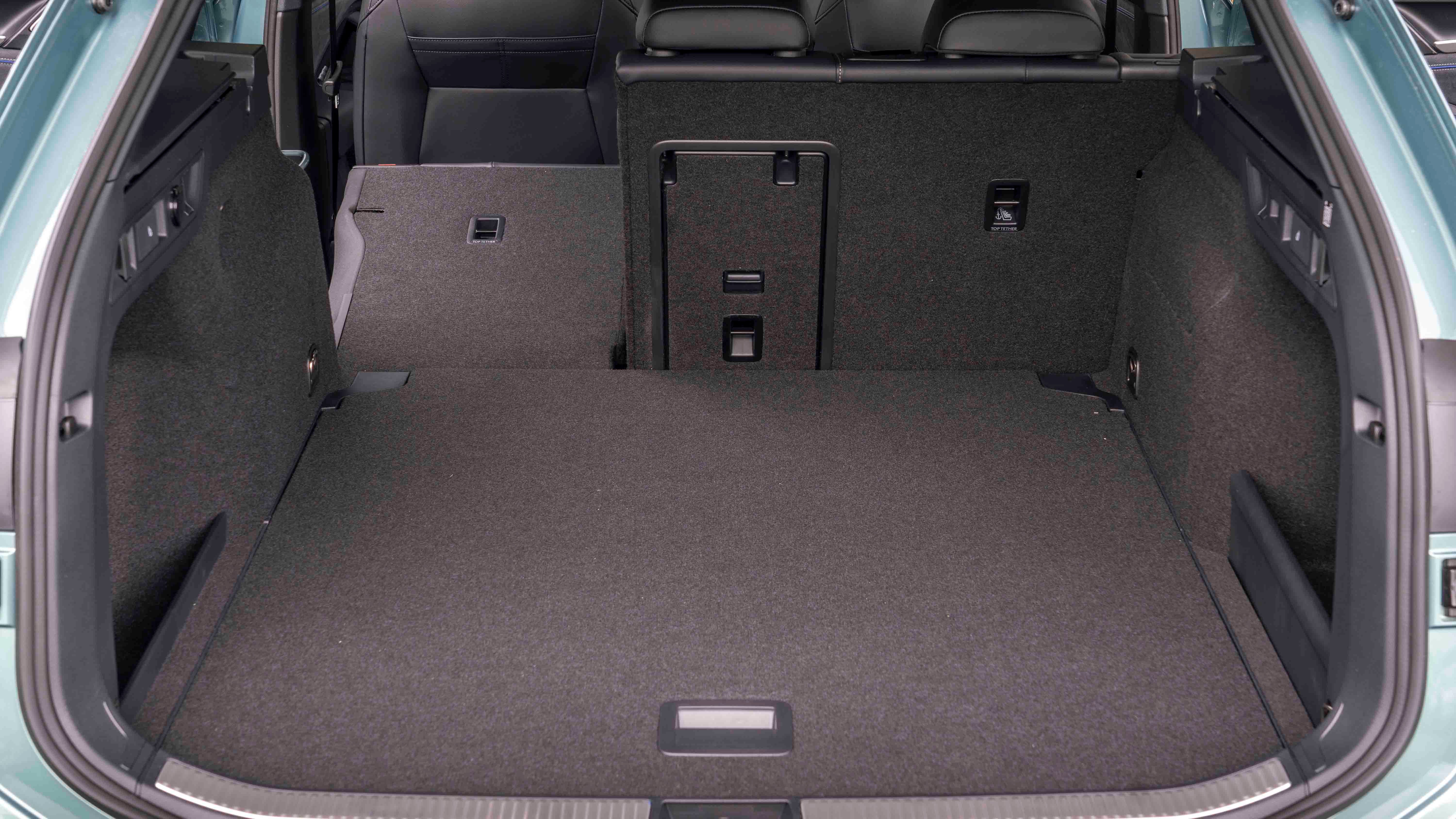
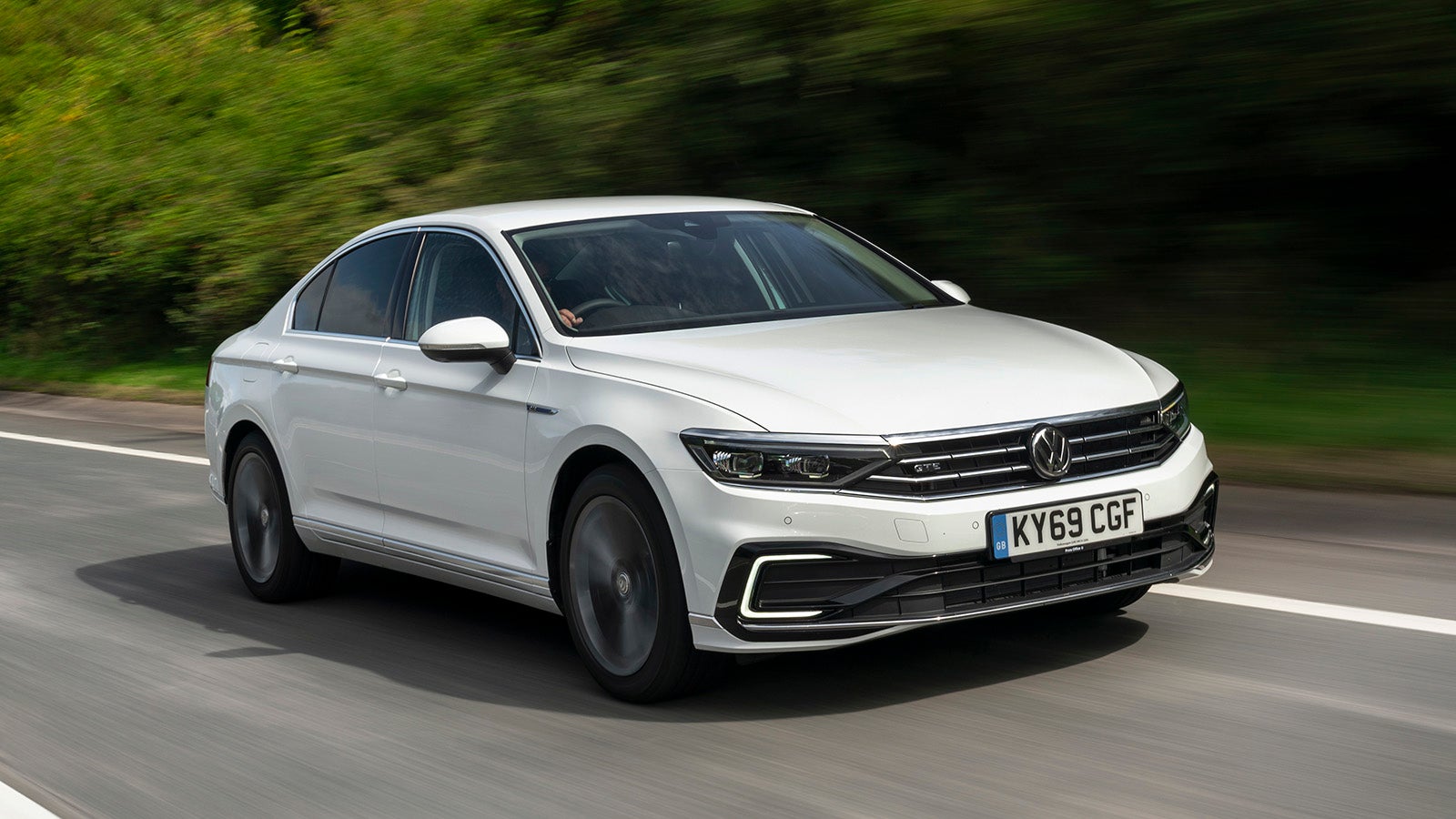
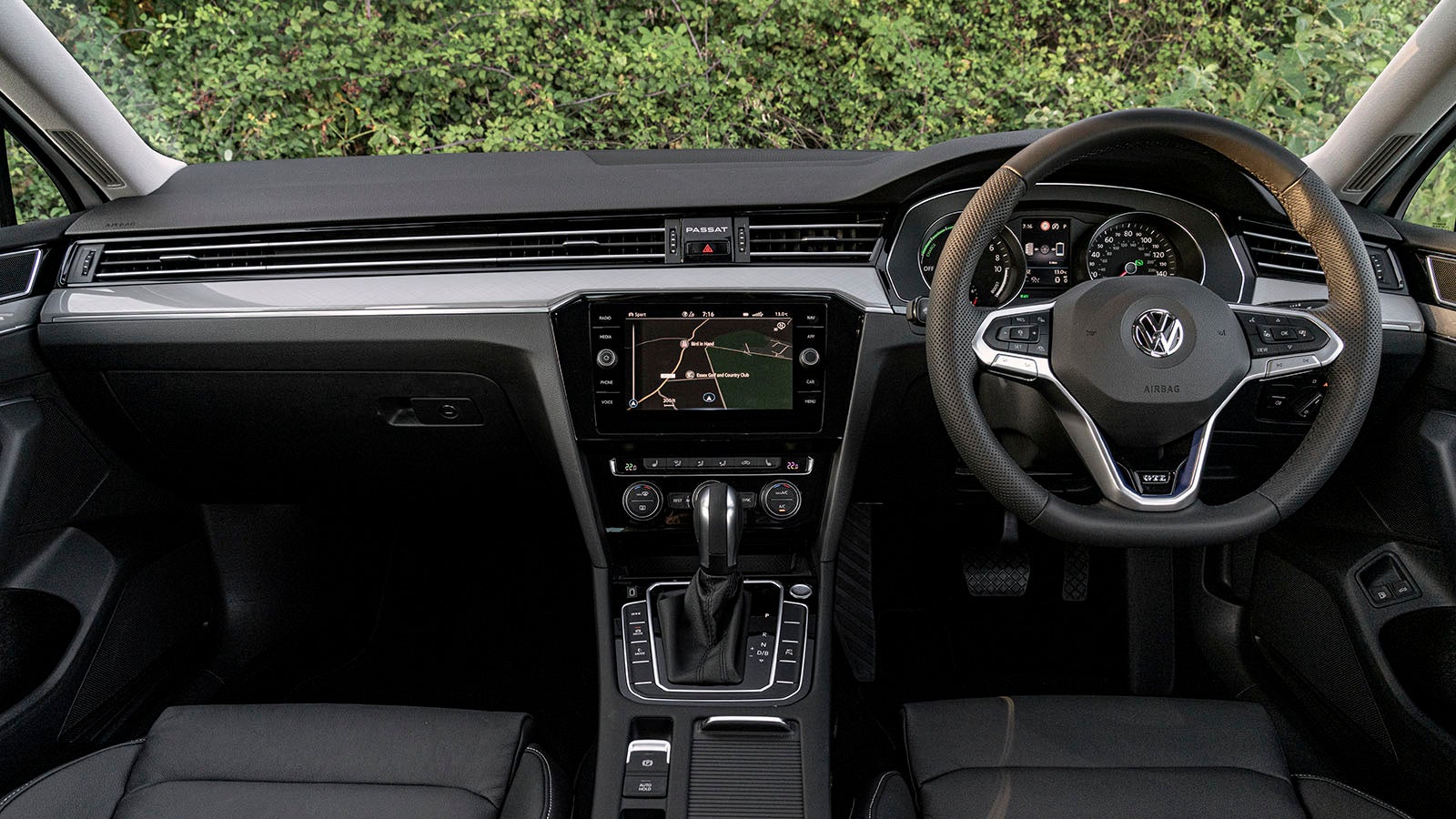
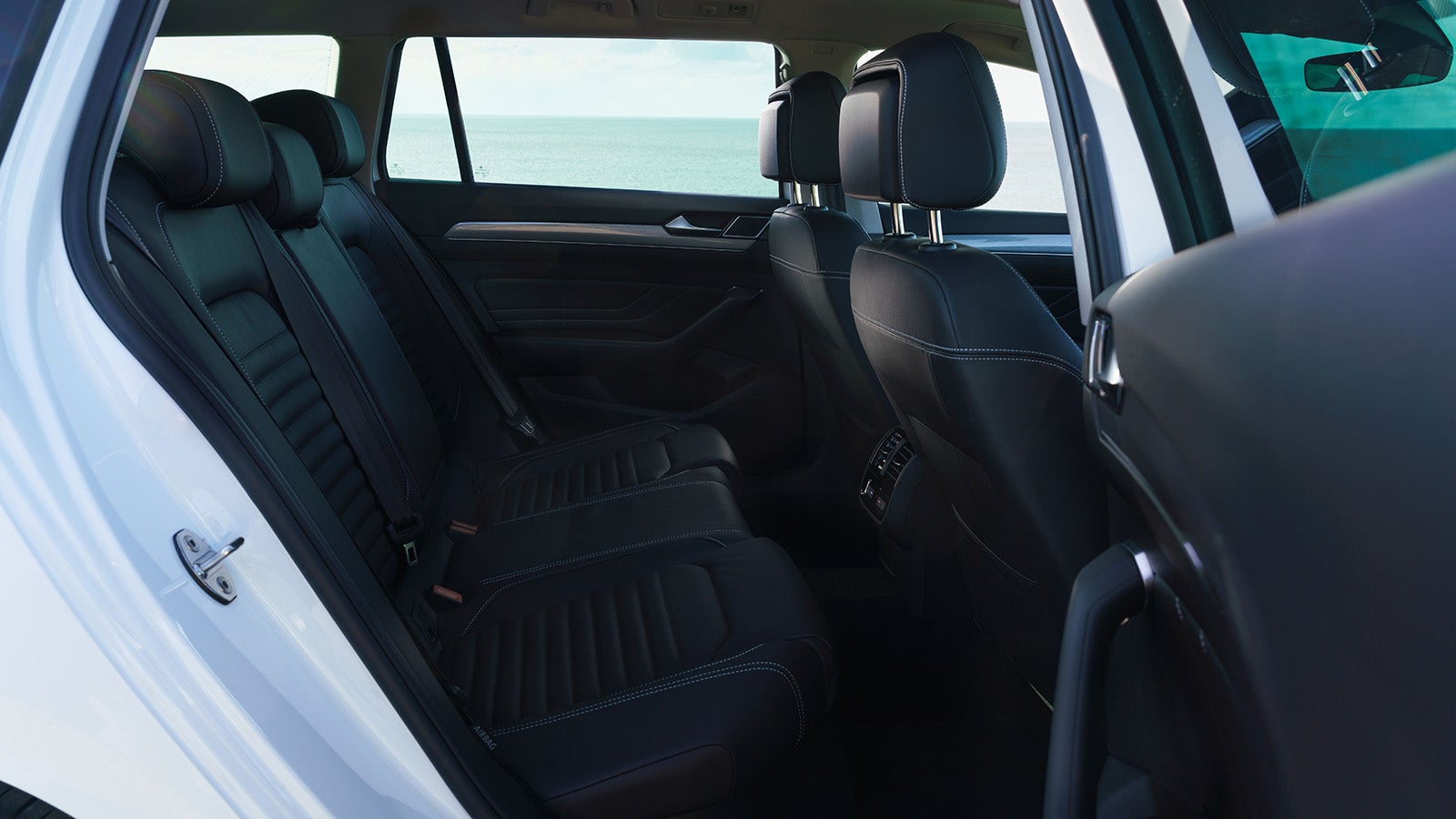
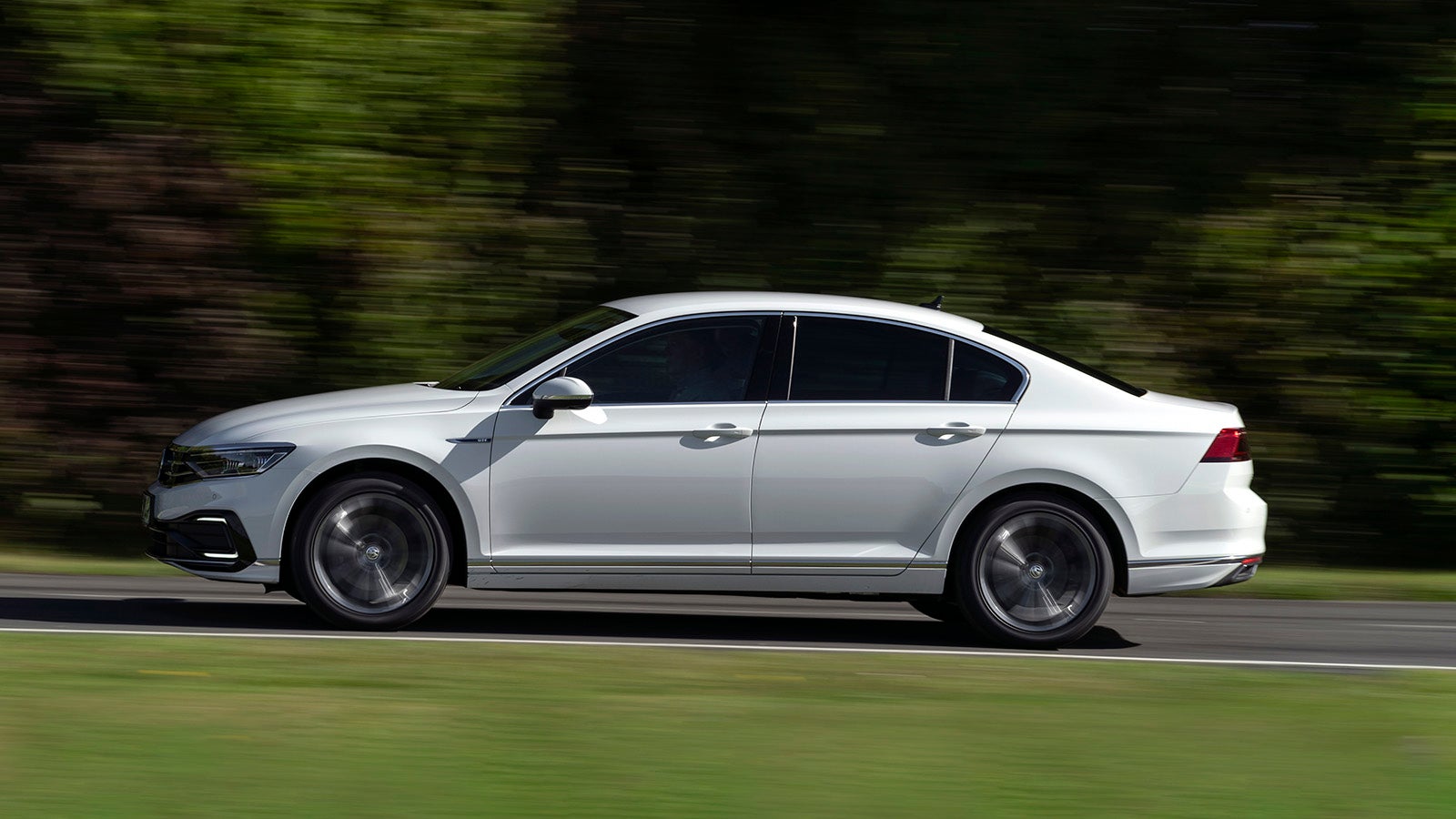
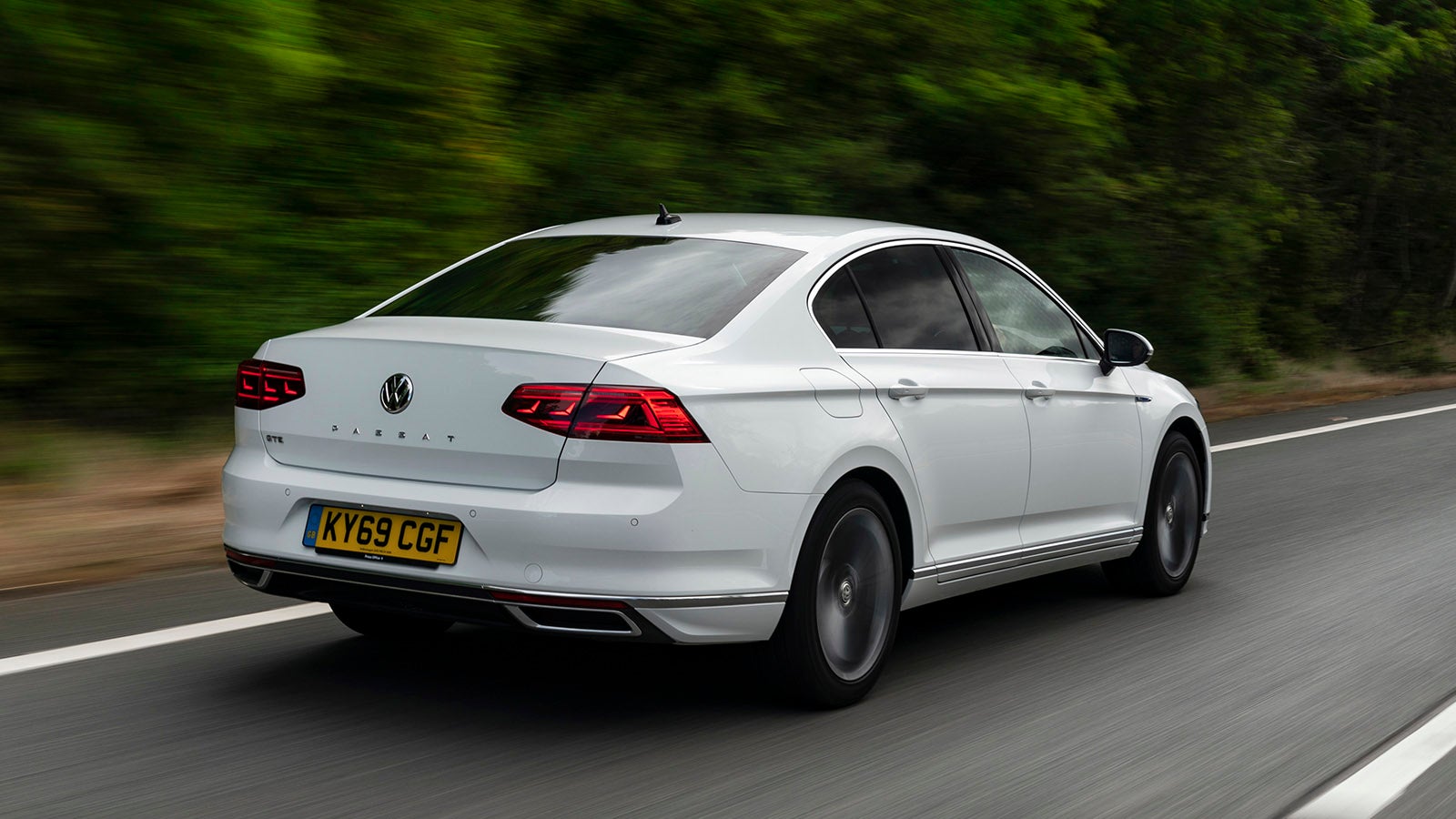
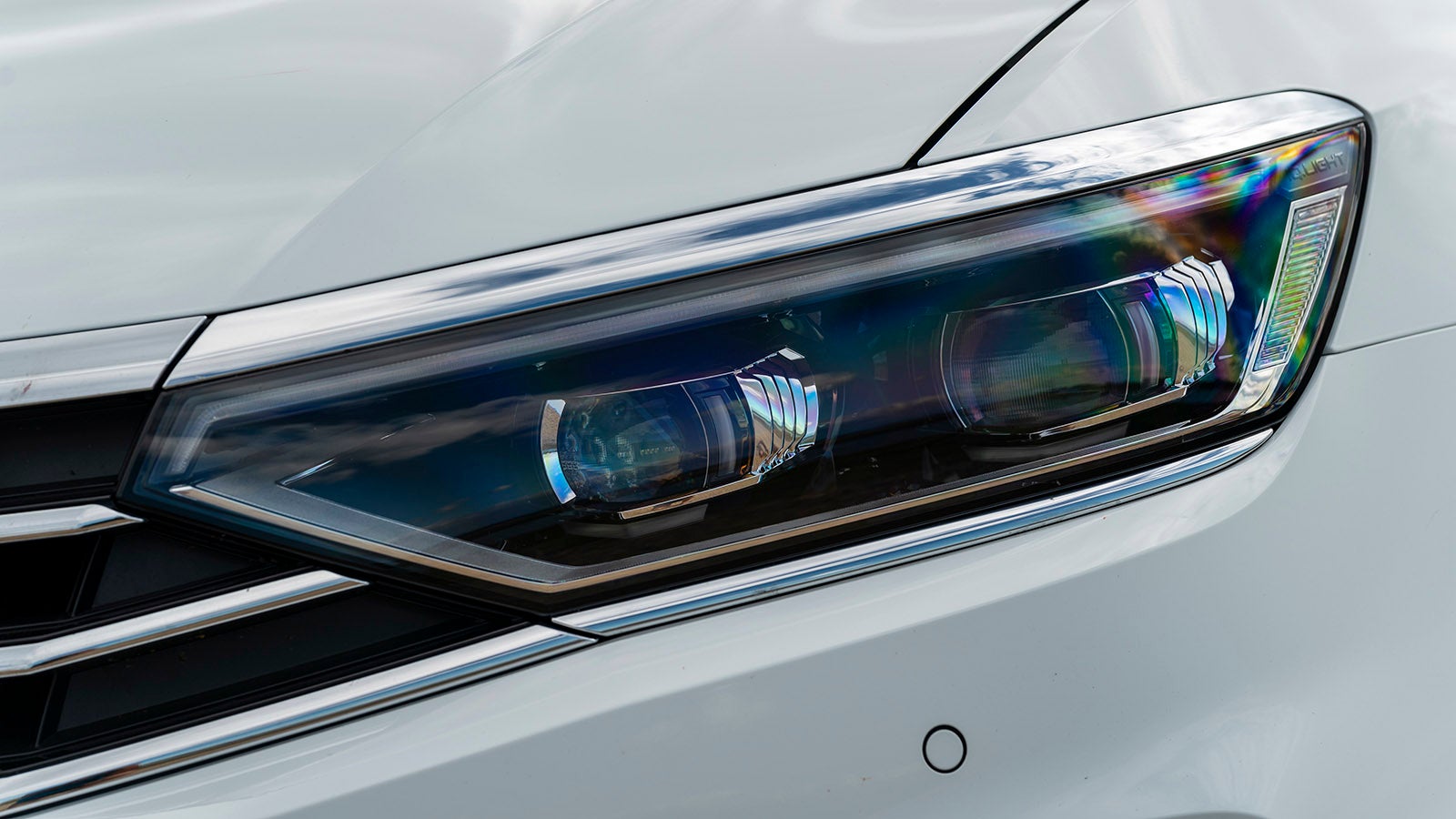
Volkswagen Passat Review

Make sure you consider the new Volkswagen Passat if you’re looking at executive cars like the Audi A4 and Mercedes C-Class.
It’s even more spacious than before, and filled to the brim with equipment and tech to make life on the road easy.
- Hugely practical
- Modern interior
- High-speed refinement
- Some fiddly controls
- Strained engine sound
- No diesel engine
Should I buy a Volkswagen Passat?
If the Volkswagen range was a stage show cast, the Golf and Tiguan would be the main characters who get all the big singing numbers. The VW Passat would be in the wings, in a background role, but one that's paramount to the success of the show.
The Passat has been going strong for over 50 years now, with the latest version being launched into the UK in 2024.
"The Passat is a template for how plug-in hybrids can be the best of both worlds when done properly"
There’s no saloon any more – everything rests on the estate model. And VW has called on its value brand, Skoda, for help developing the new Passat. A good idea? Yes, actually – the new Skoda Superb is a phenomenal piece of equipment that’s practical, plush and perfect for families. And yet, the Passat is even better than the Superb in some areas.

While the entry-level Superb Estate is typically a little cheaper than the Passat as a new car, there's very little difference on the used market after a year and 10,000 miles. We'd probably sway towards the slightly more prestigious VW badge, and pick a colour that really pops in the sun – it's nice to see that you don't have to stick with a monochrome shade.
A year-old Passat also undercuts the Audi A4 Avant and BMW 3 Series Touring, despite being more high-tech, more economical and considerably larger.
Mind you, there are warships smaller than the Passat. Its rear-seat space wouldn’t feel out of place in a £100,000 limousine, and its boot is larger than nearly all the SUVs you care to mention. For swallowing five people and a serious amount of stuff, the Passat is one of the best.
If you're shopping this model's predecessor, check out our review of the 2014-2023 Volkswagen Passat.
Interior and technology

Previous Volkswagen Passat models had a conservative interior filled with dour monochrome trimmings. Just like the new Tiguan – with which the Passat shares most of its interior and engines – the new Passat throws that conservatism completely out of the window. With an enormous touchscreen taking pride of place, it feels like you’re in the cinema every time you get in.
As standard, the screen is 13 inches, but a 15-inch screen is optional. That’s almost the same size as a Tesla Model 3’s screen but, thankfully, the Passat’s dashboard looks and feels a lot more substantial than the Tesla’s. The materials you’ll touch are generally strong and sturdy, and there are some lovely trim pieces to stop you feeling like you’re in a plastic universe.

Most of the interior is some variation of black or grey, but you can liven up the cabin by choosing one of the colour themes through the screen. This changes not only the colour of the ambient lighting, but also the backlit dash trim, the touchscreen display and the digital dials.
You’ll be using the touchscreen a lot, as it now controls most of the car’s features – including climate settings. It’s a good job that the touchscreen reacts immediately to your inputs – unlike some recent VW systems – and is high-res for maximum clarity. Not to mention impressively configurable, and once you've set the home screen to your preferences you've got easy access to your most-used features. Simply hold the tiles on the home screen to move or change them – just like organising apps on an iPhone.
You can also swipe down for a menu that covers some of the car's driving functions. This is the easiest way to get to the auto hold settings, and the EV/hybrid modes in the plug-in Passat.

It’s not absolutely perfect, though – the sat nav showing local EV chargers in a petrol car suggests a slight lack of attention to detail (although it's very useful in the eHybrid), and the volume touch slider is still annoyingly imprecise, basically offering full volume or mute with little in between. Similar story with the touch-controlled panoramic sunroof that comes as standard on Elegance and R-Line trims.
Entry-level Life trim offers the best value, with a huge list of standard equipment that includes digital dials, LED headlights with auto high beam, three-zone climate control, massaging front seats, adaptive cruise control and a powered tailgate. Mid-range Elegance adds suede upholstery to the seats, LED brakelights with changeable lighting designs, upgraded massage seats and aluminium trim. Alongside the black styling pack and 18-inch alloy wheels of R-Line, there’s Matrix LED headlights and 30-colour ambient lighting. Perfect if you’re afraid of the dark.
Practicality

A reversing camera is fitted as standard on the new Passat, which is handy considering the car has grown by over 10cm. At 4.9 metres long, you get a lot of car, and an absolutely vast amount of space inside.
Like the Superb, the Passat offers a seriously generous amount of legroom. Whether you’re ferrying kids or high-ranking executives, no one will complain about how much space they have to stretch out in. And, while the taller Tiguan offers even more headroom, there’s no shortage of it in the Passat – even on trim levels with the panoramic sunroof.
There’s easily room for three adults across the rear bench, or a pull-down central armrest with over-engineered cupholders if the middle seat is vacant. Rear-seat passengers get a couple of useful storage pockets, along with their own air-con zone and USBs, but we’re a little disappointed that the seats don’t recline like they do in the Tiguan. Still, we found them very comfortable when we waited for the plug-in hybrid to charge, so they should be comfy for long journeys.
With so much space, wide-opening doors, easily accessible Isofix points and even built-in sunblinds, the Passat makes an ideal parent wagon.

And, even the most prepared parents will struggle to fill the Passat’s class-leading 690-litre boot. It’s a doddle to load enormous items into the long, tall and flat boot, and there are fold-out hooks and deep side pockets for extra versatility. The loadcover pulls across automatically when you shut the boot, and there’s also a bit of extra space under the boot floor in the spare-wheel cavity. In fact, the Passat Estate even comes with a QR code in the boot – scan it and you’ll be sent to a video about the boot’s features. Good if you’re struggling to sleep.
Don't be put off by the Passat eHybrid's 510-litre figure – the difference comes from the lack of underfloor storage. So the boot itself is still long, wide and flat. You definitely won't struggle to fit big suitcases, dogs or bulky hobby equipment in there. In the hybrid, the small amount of underfloor storage is perfect for the charging cable.
Engines and performance

Diesel engines have long been an essential part of the Passat lineup, so it’s a bit of a surprise that they’ve disappeared for this generation. Your choice is a 1.5-litre petrol engine with a teensy bit of electrical assistance, or a plug-in hybrid. There's also a 2.0-litre petrol, exclusively available on the R-Line trim.
We've now driven the standard petrol engine and the 204hp plug-in hybrid. The former offers 150hp to get the porky Passat up to speed, and performance is satisfactory at best. An on-paper 0-62mph time of 9.2 seconds sounds fine, but the engine sounds strained under any sort of heavy acceleration.
Only the R-Line trim level gets driving modes, and our Elegance test car felt like it could do with a more responsive setup. An automatic gearbox is standard – the gear selector has moved to the steering column – but it’s a little slow to react and could be slicker with gear changes.
The eTSI engine features mild-hybrid assistance to reduce emissions and allow the stop-start system to engage more frequently. It also boasts cylinder deactivation, where two of the engine’s four cylinders can shut down when they’re not needed. Finally, the Passat’s smooth shape has made it slippery and aerodynamic. That all adds up to a quoted fuel economy figure of 51mpg – so perhaps it’s no wonder there’s no diesel.

Before we drove the eHybrid, we expected it to be the better choice. And it is. As long as you've got a bit of charge in the battery, the car is incredibly refined. You don't hear the petrol engine half as much, and the car's brain juggles the petrol and electric power superbly in the normal Hybrid mode. It's a template for how plug-in hybrids can be the best of both worlds when done properly.
The 204hp version offers plenty of performance in almost all circumstances – we only wished for a little more shove under full acceleration on a motorway slip road. For this reason, we wouldn't see fit to opt for the costly 272hp version.
A full charge of the battery gives a maximum range of 82 miles – meaning you could feasibly use the Passat as a full EV for most journeys if you can charge frequently. And even if you can't, the Passat now accepts fast-charging at up to 40kW, so a top up to 80% charges takes half an hour if you want to enjoy EV driving when out and about.
Officially, the Passat eHybrid will manage over 900mpg, but how close you get to that figure depends entirely on how often you drive on electric power. As the Passat is a company-car favourite, what’s more important is its 9g/km of CO2 output, putting it in the 5% Benefit-in-Kind tax band.
Driving and comfort

Comfort is the order of the day in the Passat – there’s no effort to feel sporty or to please keen drivers. Which makes perfect sense as the Passat will be used for family transport or for long, dull motorway trips. If you want excitement, get a Golf R estate instead.
Big impacts are buffed away like a butler swatting a fly, and the Passat is as refined as you’d hope on faster roads. There’s a bit of annoying road and tyre noise but, in most respects, the Passat is fantastic at soaking up the miles. It's actually a little more refined and a little more comfortable than the Superb.
But it doesn't fall apart in the corners either. The poised body control gives it a fluidity and stability that's quite impressive for such a big barge – it feels collected rather than floppy.
The suede-like trim on the seats in Elegance trim is soft and tactile, and the top two trims get 13-point massaging seats for de-stressing after work. Heated and cooled seats are available, as is a ‘Dry Boost’ function that can start to dry damp clothes. We wouldn’t recommend using the Passat as a clothes horse, mind. And, from the seats menu on the screen, you can move the passenger’s seat forwards or backwards from the driver’s seat – which is a feature we’ve never thought about until now.


























































